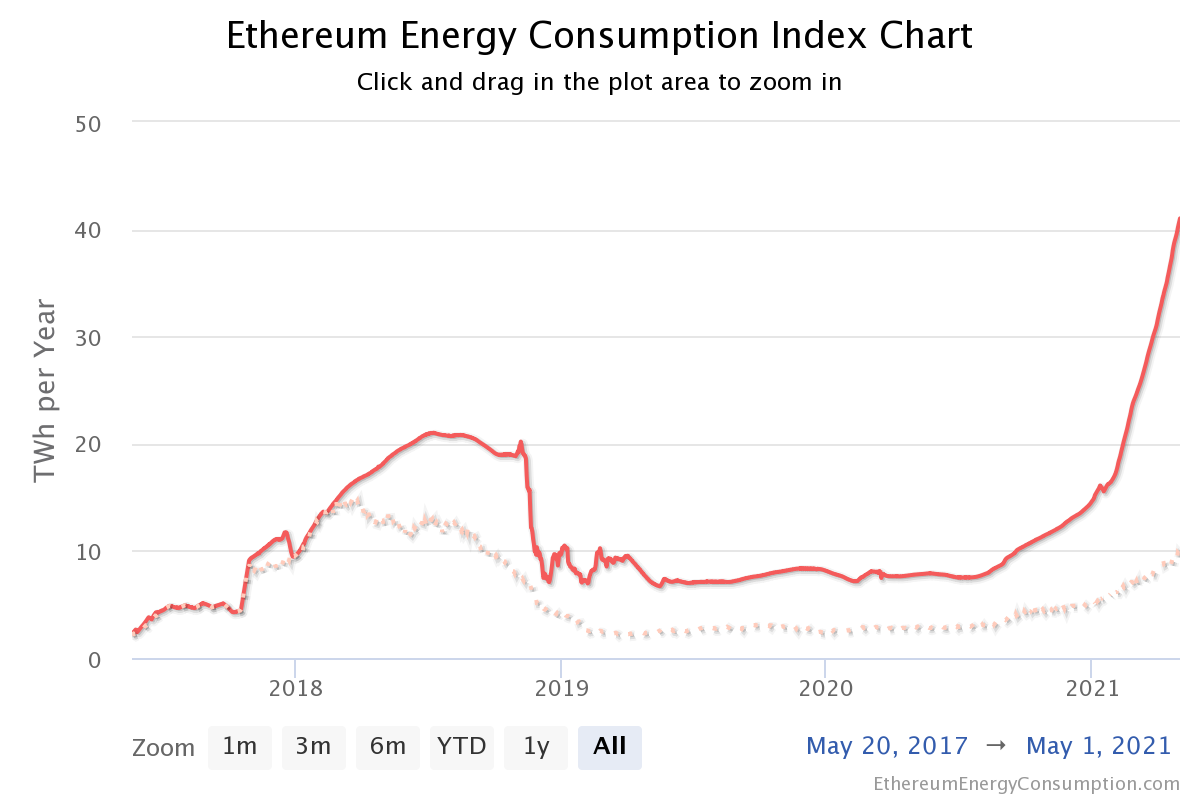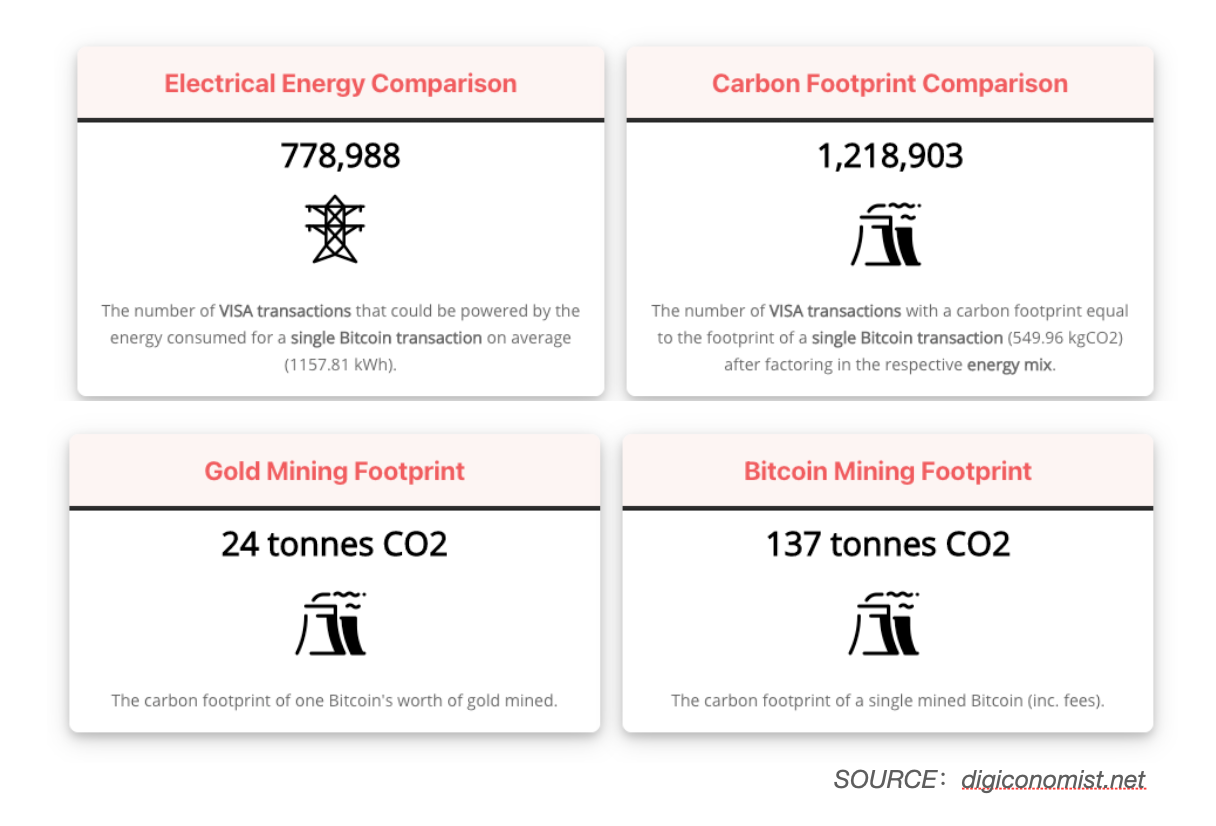If we say that in the past five years, the competition dimension of the global blockchain is performance and application, and the participation behavior is "bottom-up",Then there will be a "big reversal" of competition indicators and development models in the next five years, sustainable development and low-carbon emission reduction will become new dimensions of competition, and this driving force will be "top-down",That is to say, governments, environmental protection agencies, and the public will all become active and active participants in the blockchain "energy saving and emission reduction" action.
Bitcoin’s energy-intensive mining and Ethereum’s POW mechanism, these “hidden corners” that were once in the public eye, will be tracked and calculated under the spotlight, and compared in the energy consumption lists of various industries.One side is the condemnation of the existing energy consumption situation, and the other side is the use of various new green methods. Will this start a new round of blockchain elimination?secondary title
Energy-intensive mining and transactions can no longer be sustained
According to carbon.fyi, a blockchain carbon footprint query website, the total power consumption of the Bitcoin network is about 45.8 TWh (terawatt hours), which is equivalent to the annual output of 125 Daya Bay nuclear power plants, and emits about 45,800,000 tons of carbon dioxide per year; The annual power consumption of workshop activities is about 9.62 TWh, which is equivalent to the annual output of 26 Daya Bay nuclear power plants.

In terms of transactions,The energy consumed by a bitcoin transaction is about 700,000 credit card swipes, transaction speed and gas fees have made Ethereum a "big energy consumer". Based on this, many organizations openly advocate,It is hoped that cryptocurrency traders will abandon the POW chain and turn to the POS chain, and the voice of public opinion is getting loudersecondary title

Can NFT become a carbon reduction tool for the public?
One is the "energy saving" of the blockchain operation mechanism, which is mainly aimed at the blockchain industry, and the other is the use of blockchain technology to track carbon footprints, which is aimed at the entire society, including the government, enterprises and individuals, will become more popular, and its influence and driving effect will be stronger. In 2018, IBM proposed that the blockchain can help reduce carbon emissions, and use tokens to automatically calculate how many carbon credits companies need to purchase to make up for carbon emissions. This is a service for enterprises.

For the personal side, many organizations have recently begun to speak up and provide solutions, and many of them have adopted the "NFT" method to help the public track their carbon footprints.In summary,

In summary,Based on the POS mechanism, regardless of whether it is homogenized or non-homogeneous token NFT, for enterprises and individuals, the green blockchain has been pushed into the spotlight, Mercedes-Benz, Volvo, Tata and other auto companies have used blockchain technology to track and reduce carbon emissions in supply. I believe that more industries will join this year, andPersonal emission reduction also needs more effective incentives to mobilize, Everyone’s online shopping transportation, item packaging, product distribution, etc., will accumulate huge energy consumption after a year without knowing it.If some of them are delivered in a digital way instead of logistics, a large amount of carbon emissions can be reduced, so the combination of POS + NFT, for enterprises and individuals, may be a feasible way to reduce emissions at this stage.